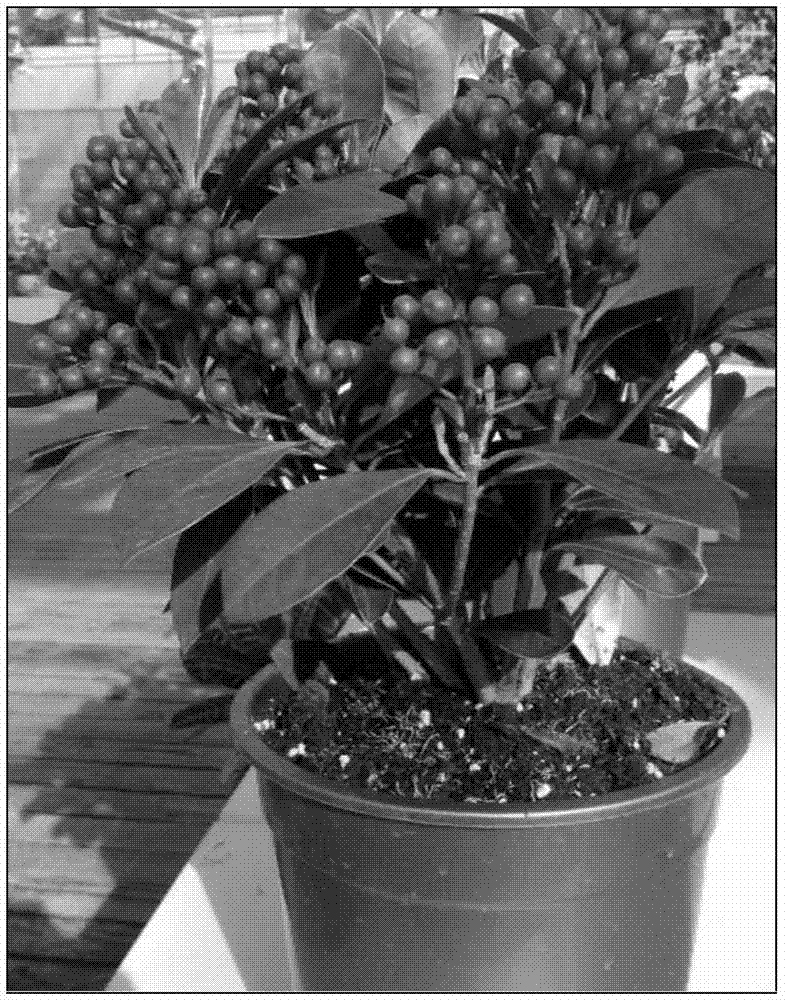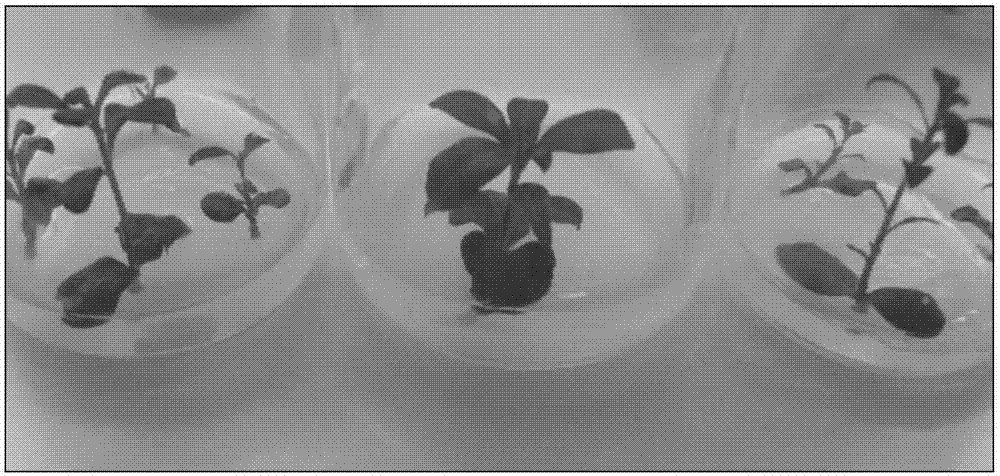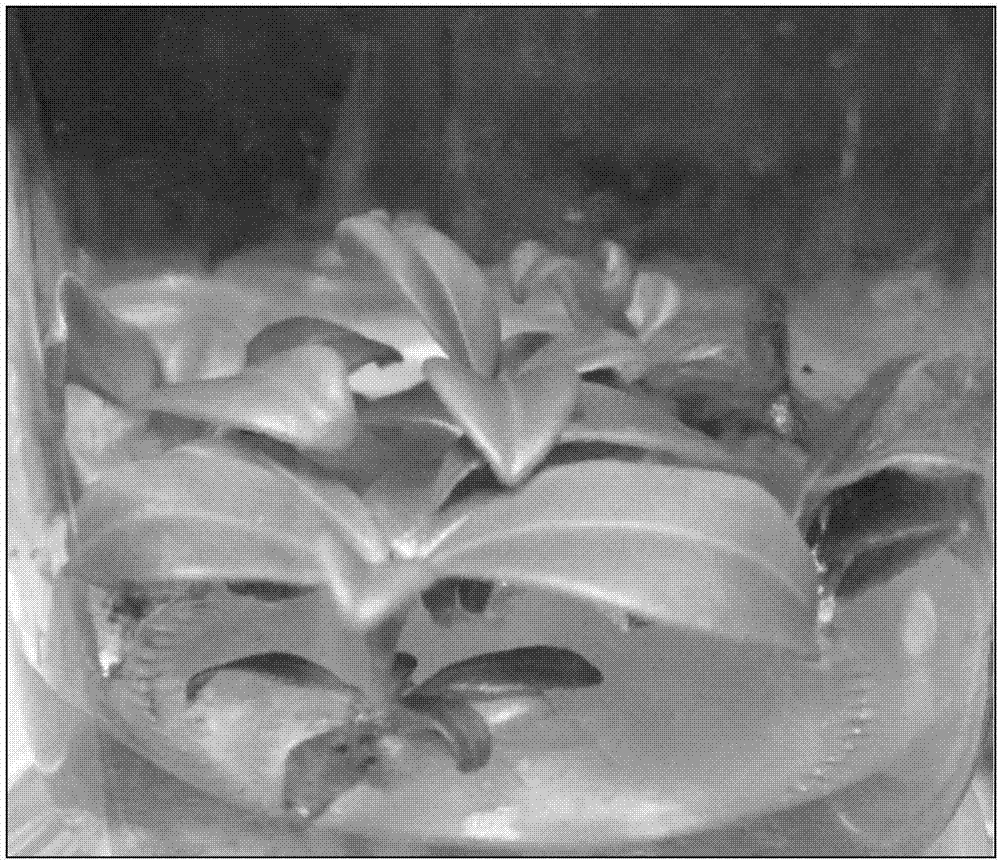Rapid propagation method of skimmia japoniac
A technology of caprene and golden red, applied in the field of biology, can solve the problems of slow propagation of golden caprene and inability to maintain the excellent characteristics of the female parent, and achieve the effect of consistent plant sex, high breeding coefficient and obvious technical effect
- Summary
- Abstract
- Description
- Claims
- Application Information
AI Technical Summary
Problems solved by technology
Method used
Image
Examples
Embodiment 1
[0032] Embodiment 1 surface sterilization
[0033] 1.1 Sampling
[0034] From March to May, take samples in sunny afternoons, remove the branches and leaves, and cut the stems into 2cm long sections, each with an axillary or terminal bud. Rinse with running water for 1h to 2h, and soak in 60% to 80% ethanol for 30s to 60s on the ultra-clean workbench, then soak in different sterilizing agents for different times, and finally rinse with sterile water for 5 to 6 times. Screen the best sterilizing agent and sterilization time.
[0035] 1.2 Effects of different sterilization times on the survival rate of explants
[0036] Set 5 different sterilization times of 0.15% (mass to volume ratio, the same below) mercuric chloride for 6 minutes, 8 minutes, 10 minutes, 12 minutes and 15 minutes, compare the effect on the survival rate of explants, and repeat 3 times. Survival rate=survival number / inoculation number×100%.
[0037] The results showed that when the concentration of 0.15% m...
Embodiment 2
[0046] Embodiment 2 first-generation induction
[0047] MS was used as the basal medium in the stages of primary culture, proliferation culture and rooting culture, and different types of hormones and their different concentrations were added. See Table 4 and Table 5 for details.
[0048]In the primary induction medium, ZT was set at 6 concentrations of 0.01, 0.05, 0.1, 0.2, 0.5, and 1.0 mg / L; IBA was set at 5 concentration gradients of 0.01, 0.02, 0.04, 0.05, and 0.1 mg / L; 3 There are 8 concentrations of 0.5, 1, 2, 4, 5, 6, 8, 10, and 12 mg / L.
[0049] After the initial culture of sterile explants for 30 days, the results showed that when the concentration of ZT was 0.05mg / L~0.5mg / L, the explants could germinate and grow, and when the concentration was 0.2mg / L, the germination of explants was induced When the concentration is 0.5 mg / L and above, although the induction rate reaches 65%, there is differentiation phenomenon in the later stage of culture, which is not conducive ...
Embodiment 3
[0058] Embodiment 3 Proliferation culture
[0059] In the proliferation stage, ZT was set at 5 concentrations of 0.1, 0.5, 1.0, 2.0, and 3.0 mg / L; KT was set at 0.01, 0.05, 0.1, 0.5, 1, and 2 mg / L at 6 concentrations; IBA was set at 0.01, 0.02, 6 concentrations of 0.05, 0.1, 0.2, 0.3mg / L; add GA at the same time 3 5mg / L.
[0060] The test-tube plantlets induced on the first-generation induction medium, when they grow up gradually, and a certain amount of test-tube plantlets are obtained, select the test-tube plantlets with a height of 0.5cm and light green color, and transfer them to the proliferation medium in the same batch, and select the suitable proliferation medium . The results showed that when the concentration of ZT was 0.5-2mg / L, the proliferation coefficient reached more than 2, and when the concentration was 1mg / L, the proliferation coefficient reached the highest value of 2.4, which was significantly different from other treatments (Table 6).
[0061] Table 6 E...
PUM
 Login to View More
Login to View More Abstract
Description
Claims
Application Information
 Login to View More
Login to View More - R&D Engineer
- R&D Manager
- IP Professional
- Industry Leading Data Capabilities
- Powerful AI technology
- Patent DNA Extraction
Browse by: Latest US Patents, China's latest patents, Technical Efficacy Thesaurus, Application Domain, Technology Topic, Popular Technical Reports.
© 2024 PatSnap. All rights reserved.Legal|Privacy policy|Modern Slavery Act Transparency Statement|Sitemap|About US| Contact US: help@patsnap.com










